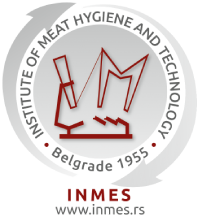Health aspects of dry-cured ham
Abstract
Different factors (pig breed, animal production practices) are responsible for nutritional characteristics of pork and dry-cured hams thereof, and their potential effects on human health. Traditional production of dry-cured ham is very popular all over Europe (Vršačka ham, Iberian ham, Serrano ham, Corsican ham, Parma ham, Modena ham, Nazionale ham, San Daniele ham etc.). Dry-cured ham is an important source of biologically valuable proteins, iron, B-complex vitamins, and phosphorus. Although the potential role of meat products, including such traditionally produced hams, in the healthy human diet have not been completely clarified, many studies are starting to draw a picture of their impact on human health. The object of this review was to provide an analysis of the nutritional composition, including some micronutrients and vitamins, of traditionally produced dry-cured ham and the role these meat products could play in a healthy diet.





